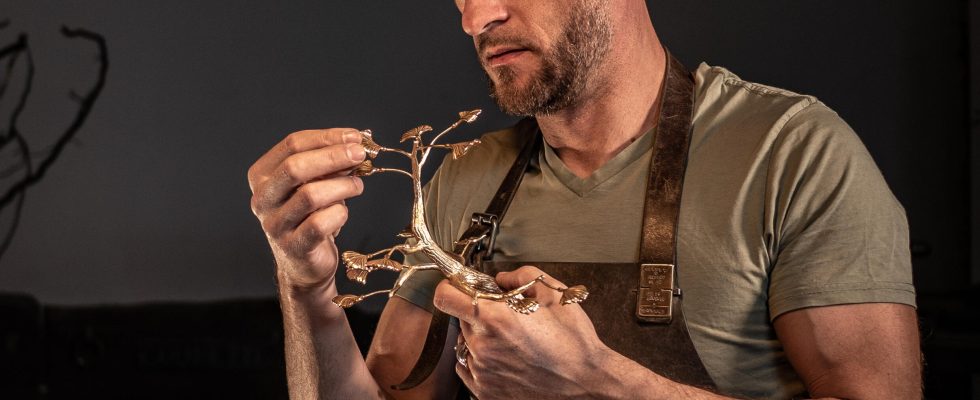The European Crafts Days end this Sunday, April 7. On this occasion, we are introducing you to the workshop of Pierre Salagnac, sculptor and art bronzier in Paris. Pierre Salagnac masters the three specific skills that make up the bronzeworker’s profession: assembly, turning and carving. His most emblematic works which made him known: the bronze bonsai which travel to the four corners of the world.
Bonzaïs, furniture, lighting or jewelry, they are designed, turned, chiselled and mounted by Pierre Salagnac who is in search of the form present in the material.
Creation is important because I can allow myself, by drawing, to make things that correspond to my profession, because I have certain constraints and I cannot do everything. I can do a lot, but not everything.
Pierre Salagnac, sculptor and art bronzier.
Drawing the pieces myself allows me to push my limits a little, to have a little more fun. Creation, for me, is really a big, big step towards freedom. And then, as a result, it’s a little new every day.
Born in Rouen, Pierre Salagnac is the third child of four siblings. Passionate about drawing, at the age of 14, he followed the path of his elders and took the competitive examination for the Boulle school, one of the largest art and design schools in Europe. During his five years of training, his attraction to bronze was transmitted to him by a teacher. “ When we arrive at the Boulle school, we tour the workshops to discover the different techniques. There is cabinetmaking, sculpture, carving, engraving. I fell completely in love with the professor and put my future in his hands. »
“ I tried to leave bronze several times because life leads you to discover other things and out of curiosity. So I cut the stone a little, worked with resins. I tried several things and I wouldn’t necessarily know how to explain it, but bronze always came back to me, or it often imposed itself on me. In certain situations where the choices had to allow me to choose a different path, bronze completely imposed itself. Each time, I had new adventures, new encounters and the bronze that was there and that was there. In fact, I’m delighted and I’m really enjoying it.»
Furniture, lighting, bonsai, jewelry, Pierre Salagnac makes the object emerge from the material. His creative process advocates the abandonment of gesture. “ Be attentive to the material, which, through its vibration, will give information to the tools. The shapes will naturally begin to sculpt themselves. The shape that will emerge will be much more natural than if I had tried to control or try to master. Behind it, there are a lot of techniques, because these are nevertheless complicated pieces to create, but it is absolutely necessary that the technique is not the guide to the gesture and the execution because otherwise we completely lose the natural side. »
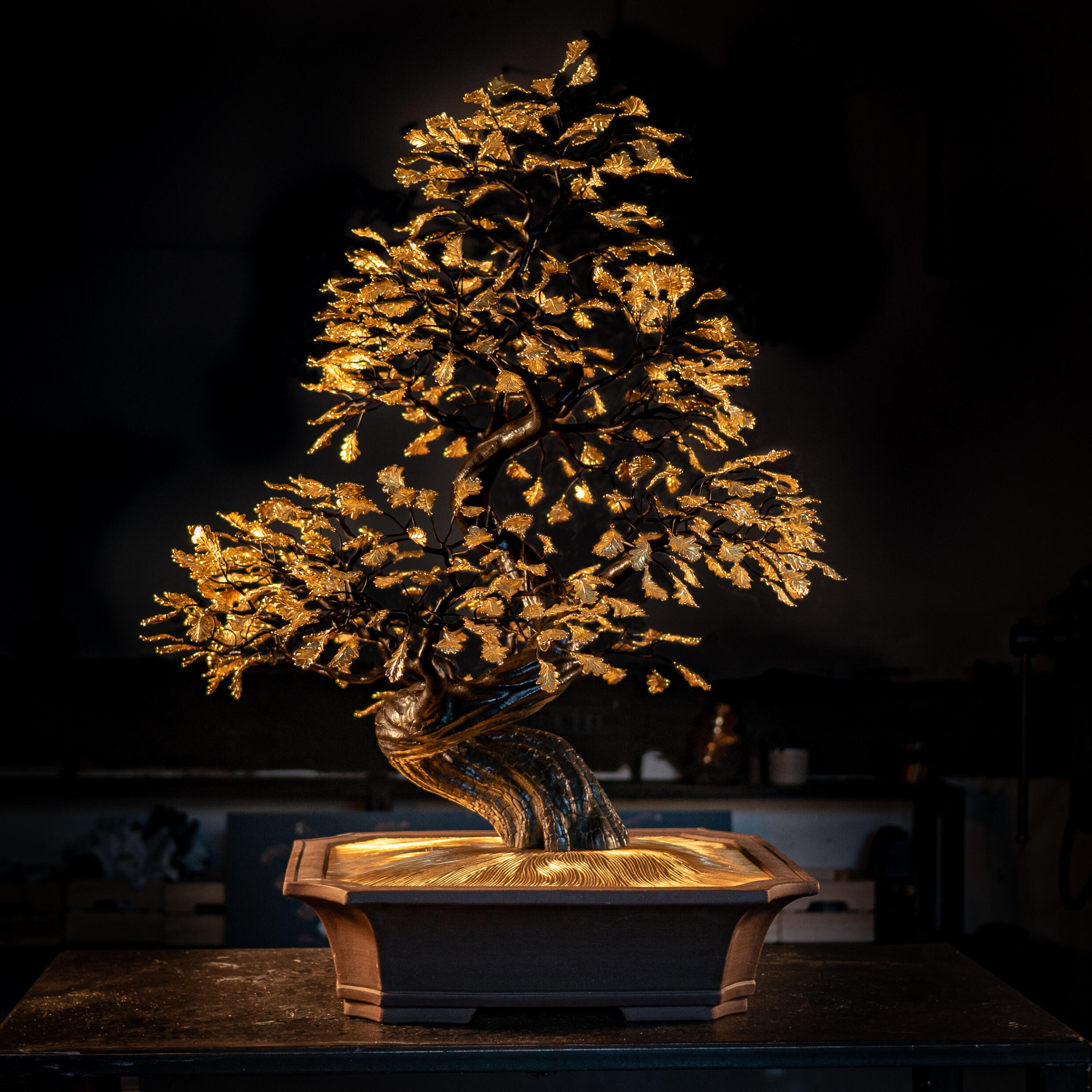
“ It’s an experiment that I started doing ten years ago when I made my first bonsai, I realized that the shapes that were born from this method brought me much more poetry and elegance. and even more surprise than other pieces. There is a room, at the back of the workshop, that I keep as a souvenir of “don’t forget that it’s not you who controls the shapes”. The forms in the will, the mastery are not just, they are poor. For me, it’s a dead end. »
After more than twenty years in the largest bronze workshops in France, and with this learning, Pierre Salagnac set out independently in 2019. For this bronze art sculptor, there are several ways of working bronze. “ Our job is to make parts that can be assembled or dismantled, and therefore durable since they can be restored as desired. This is the particularity of our professions, to manufacture objects which can be dismantled in order to be restored. The bonsai that I make, all the leaves are screwed one by one with a clockwork type screw thread which are rather delicate techniques because the material is quite difficult to lend itself to. There’s a lot of breakage and it’s quite meticulous. In terms of technique, the pieces are completely removable, which allows the leaves to be made in gold and the trunk in another color with a hot patina. ».
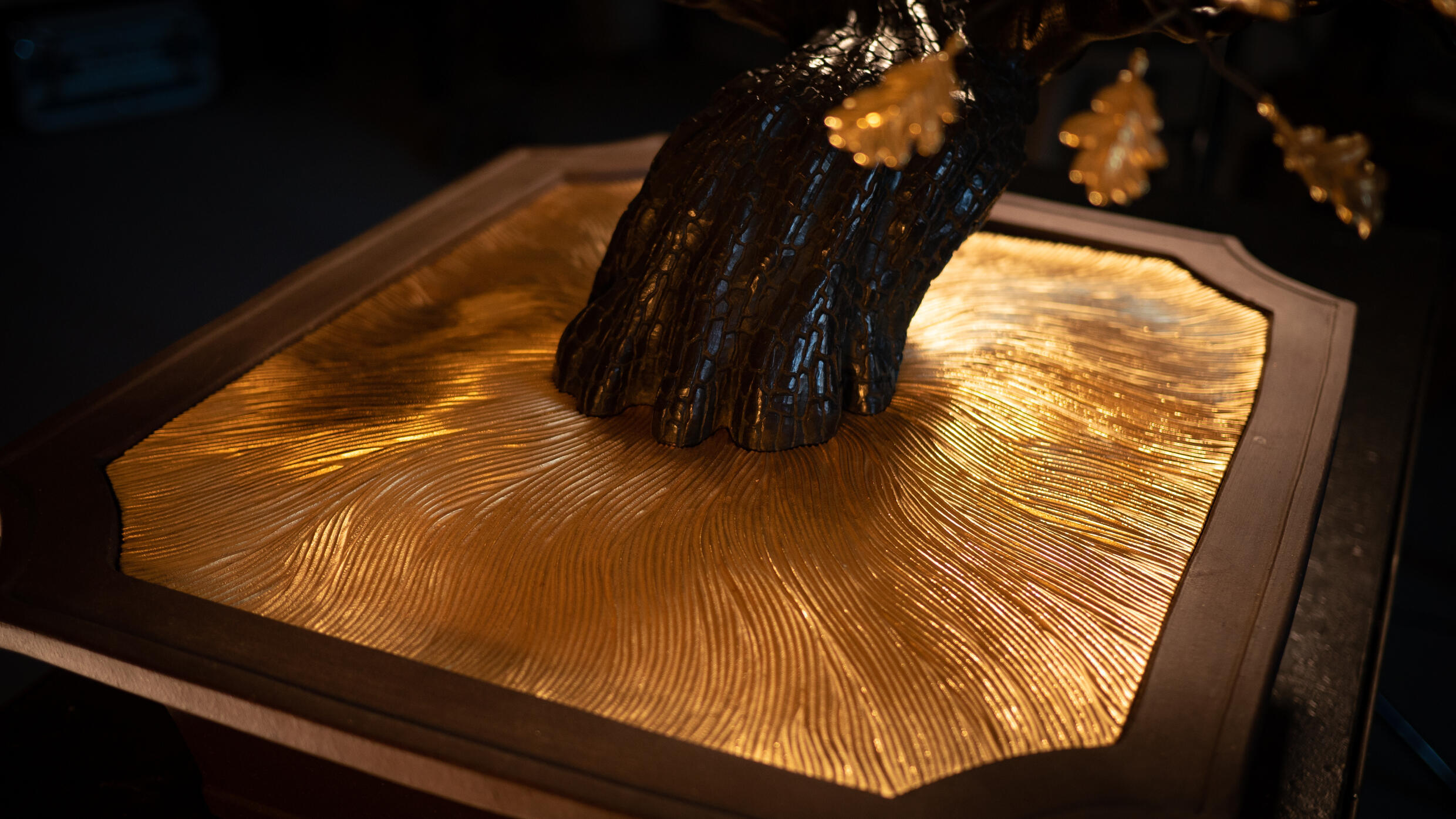
“ I used several techniques such as carving to reveal all the shapes in sculpture. I will use the torch a lot to do brazing, to do welding, to do bending. Sometimes, I will use cutters which will allow me to sculpt in the material and find precisely the shape which is hidden inside. I will also be able to use after all the surface treatments such as gold depositing, silver depositing and hot patinas which will allow me to have different colors and be able to play a little on the styles of the finished pieces “.

A fan of polished bronze, Pierre Salagnac reveals this technique to us. “ I don’t apply varnish, I don’t apply gilding, I don’t cover it. Today very very dangerous because cast iron has evolved a lot from a standards point of view. At one time there was lead in cast iron, not anymore. This means that the cast iron flows much less than before, it is less liquid, more viscous and therefore it has many defects which stand out. The cast iron is pitted, that is to say there are air bubbles trapped in the cast iron, it looks like a gruyere cheese. Today, it is filled in and then there is a coating on top, a finish which creates an envelope again. »
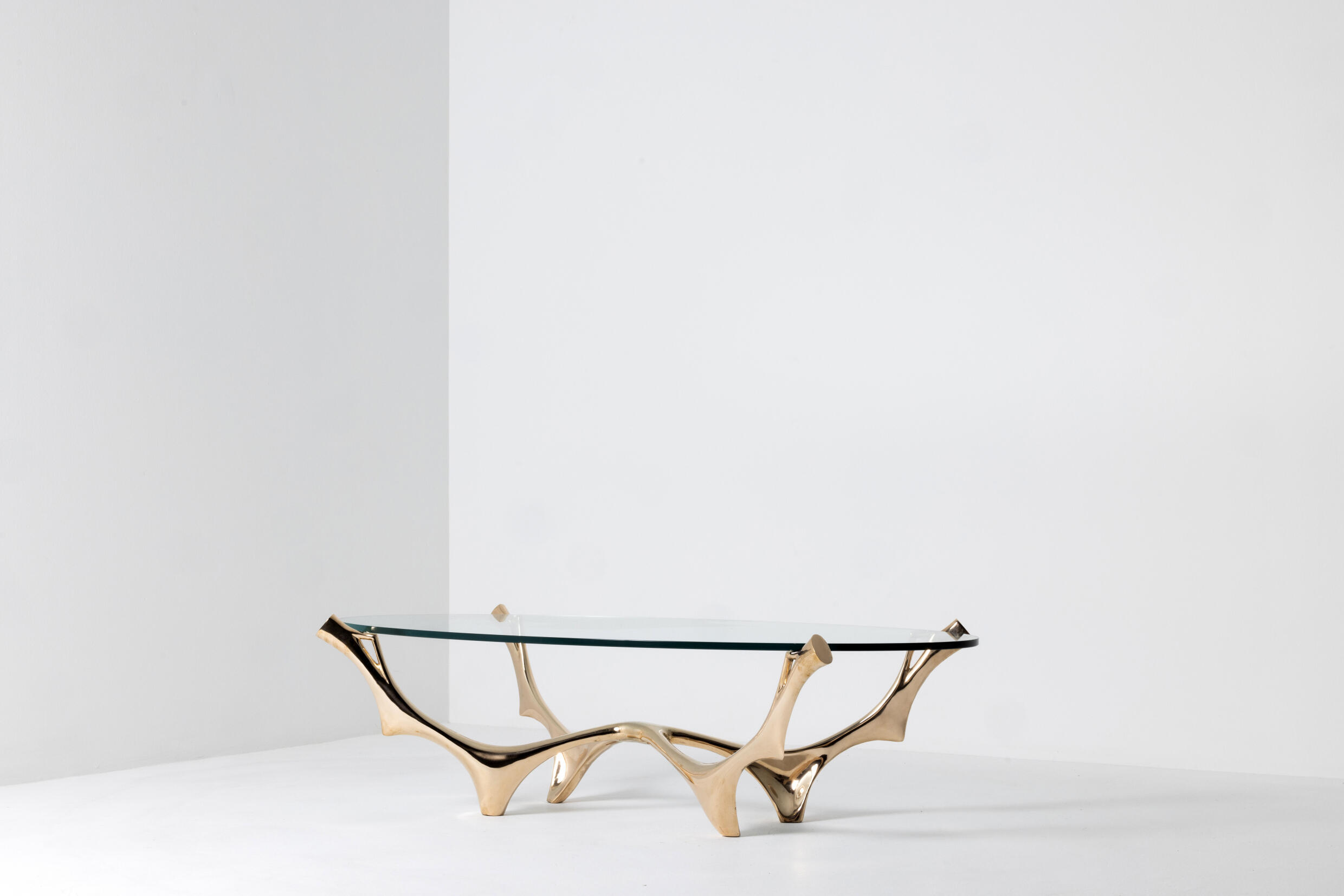
“ I opt for polishing, I polish them to a mirror finish and the pieces are raw. Bronze has the same possibility as an unvarnished wooden board, that of taking on the light, of aging, this color which will move towards a sort of maturity and give relief, life. It cleans up. I really like the imprint of life on matter. »
There is no age to discover the crafts, Pierre Salagnac’s workshop participates in the European crafts days, the JEMA, because training the hands of tomorrow is essential so that the know-how does not not fall into oblivion. “ The mission we have as craftsmen, in any case, in our rather rare professions. Our mission is not only to do our work well, it is also to pass it on. Teaching continues to take place at school. Inevitably, students leave school with baggage that other students who would surely come after the baccalaureate or who would have less time for this training will not have. »
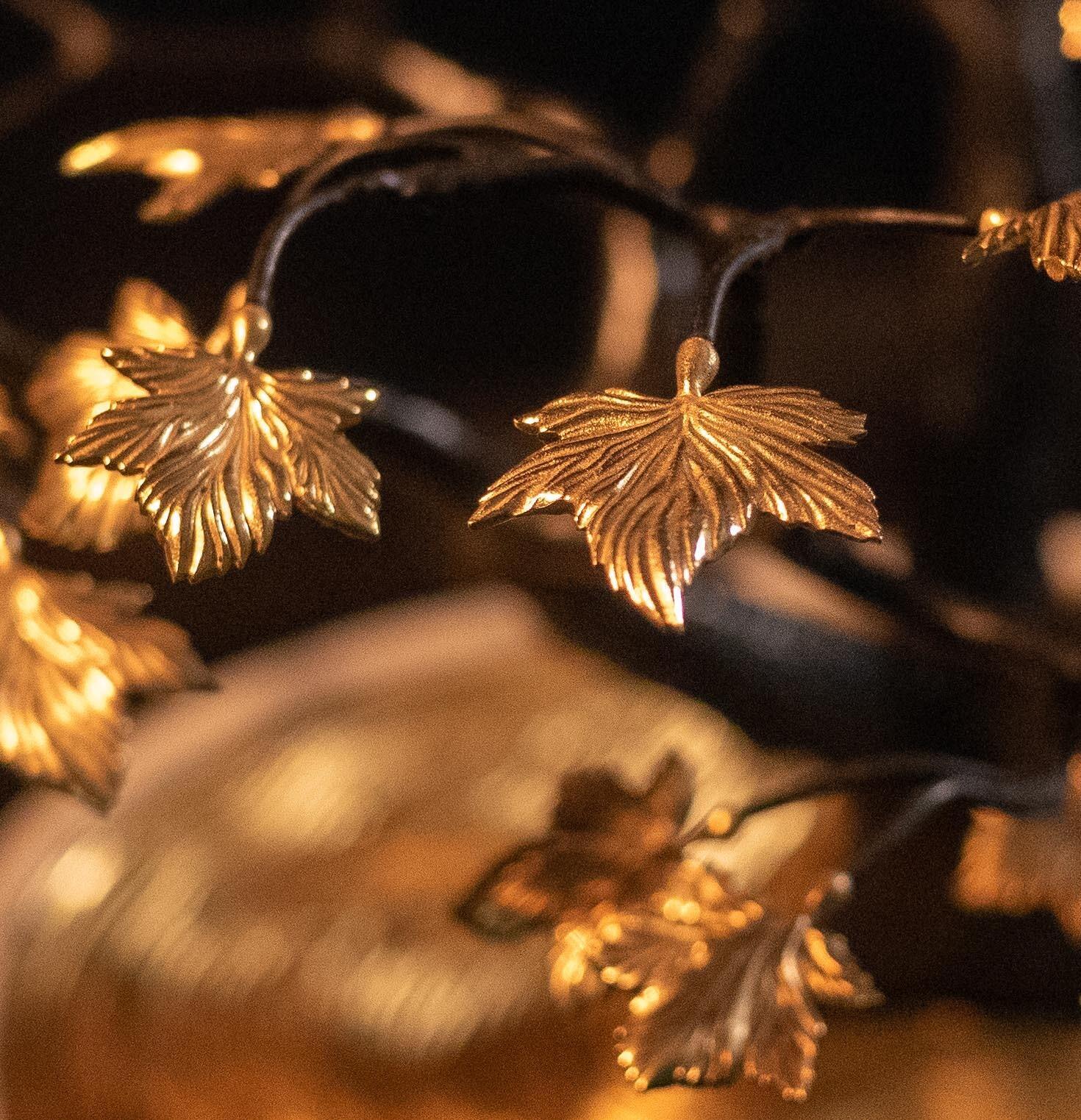
“ I dare to hope that parents will be present during the JEMA. I’ll have my eleven-year-old son there, showing people that he can also sculpt metal and that anyone can do it. Just get started. I hope there will be parents who can say “Hey, my child could follow this training to learn how to work with their hands” and maybe even children. At JEMA, I have the young people pass in front of the workbench, they try to sculpt. Lots of things happen since the child is not at all technical. They do superb shapes because they can only listen to the material and it works very well. »
Find all the episodes of 100% Création on:
Apple Podcast Castbox Deezer Google Podcast Addict Podcast Spotifyor any other platform via the RSS feed.
